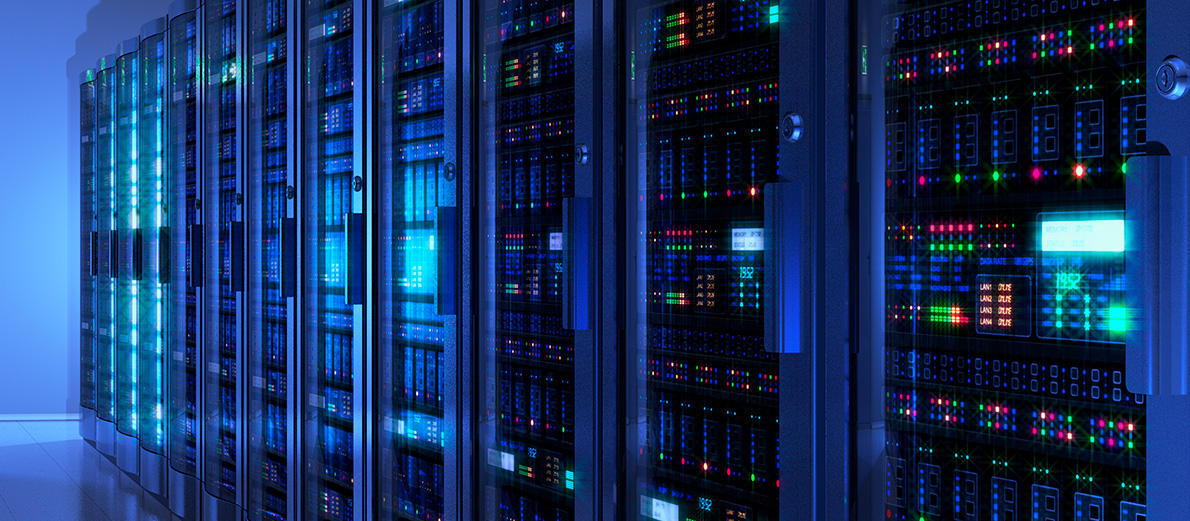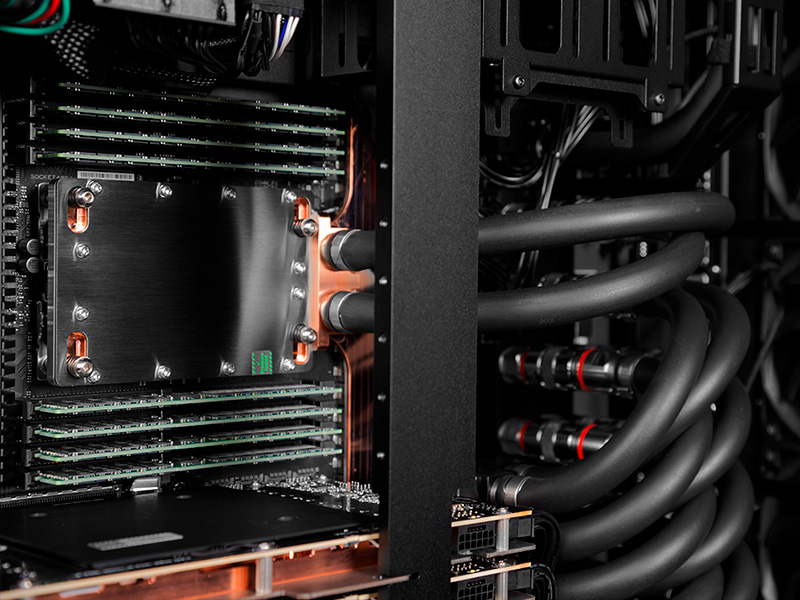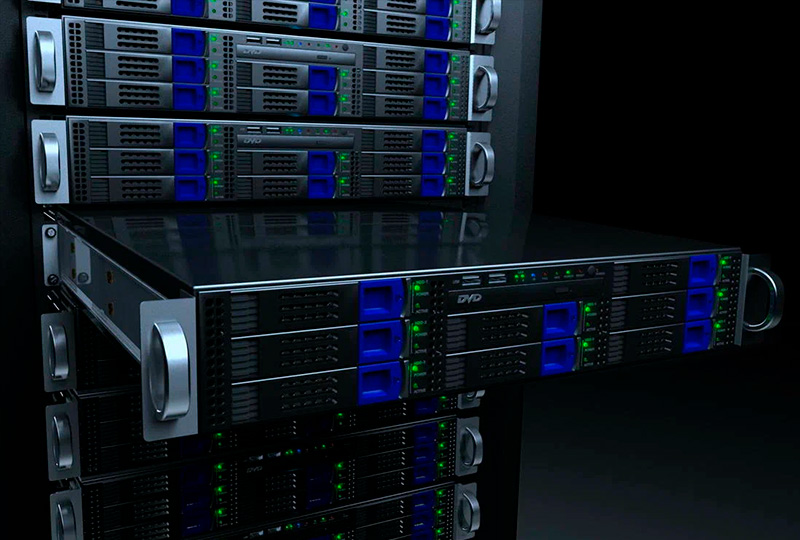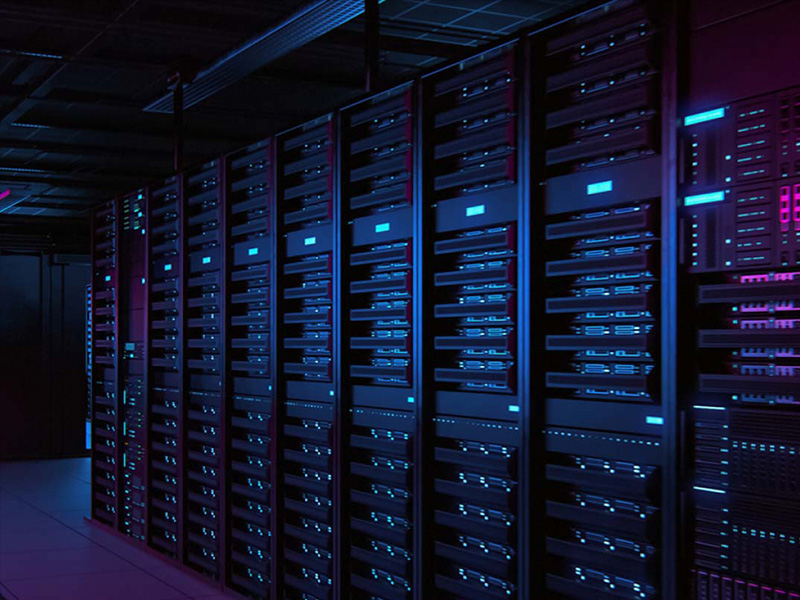- Differences from regular PCs
- Why servers are needed
- Where they are located
- Conclusion
- HYPERPC Servers

We use the internet every day, download files, communicate on social media, and play online games. All of this would be impossible without servers. So what are servers? How do they differ from regular PCs, and what are they used for? Let's explore this today.
How servers differ from regular PCs
A server is a computer that stores information and sends it to users. It differs from a regular PC in its components and operating system.

Multi-core processors
A server connects to many users. Its processor's power must be sufficient to ensure stable operation for all clients simultaneously.
While regular PCs use AMD Ryzen and Intel Core processors, servers use:
These multi-core models offer massive performance, which is unnecessary for games and office applications. However, when it is necessary to process commands from many users simultaneously, a large number of cores and threads becomes essential.
Server processors also offer higher quality and reliability. They undergo additional quality control steps to guarantee stable and uninterrupted operation. This is crucial, as servers run 24/7 without interruption.

Large amount of ECC RAM
Gaming PCs typically have 16 or 32 GB of RAM, while workstations have 64 or 128 GB. Servers can have up to 8000 GB of RAM. This is necessary for fast and stable performance under heavy loads.
Server RAM is also equipped with Error Correcting Code (ECC) modules. These eliminate errors in memory bits that occur when working with large amounts of data. This improves the stability of the server and reduces the number of failures.
Discrete network cards
Modern motherboards have integrated network cards. However, their performance and bandwidth are insufficient for stable operation with large numbers of users. Therefore, many servers use discrete network cards.
They not only outperform integrated counterparts but also offer additional functionality and enhanced fault tolerance. They also offload the CPU by hardware-accelerating network traffic processing.


No graphics card
Servers typically do not come with graphics cards, as they do not process graphic data. They also do not need to display images on a screen. The primary function of most servers is to transmit data to users, for which GPUs are unnecessary.
Graphics accelerators are only installed in a small number of servers designed for:
- cloud gaming;
- AI and machine learning;
- rendering and visualization;
- streaming and video encoding;
- scientific computations requiring large data processing.
GPU servers are most commonly used for machine learning. This is currently the most popular area where graphical accelerators are used.
Server cases
Server cases come in three form factors:
- Rack. Installed in server racks.
- Tower. Looks like regular office desktop cases.
- Blade. Modular cases that allow multiple servers to be placed in a single chassis.
Server cases are significantly different from cases for regular computers. They feature a well-thought-out design that allows for quick component replacements, high durability, and efficient cooling systems. They also don't come with RGB lighting.

Operating system
Regular Windows tools and features are unsuitable for servers. They are installed with the following operating systems:
- Windows Server;
- VMware ESXi and Proxmox;
- Linux (Ubuntu Server, CentOS, Debian, Red Hat).
The most popular server OS is Linux. It is completely free and highly flexible in configuration.
Why servers are needed
Servers perform many tasks, ensuring the stable operation of the internet and digital services. The main areas of their use include:
- Data storage and processing. Servers are used to store vast amounts of information. This may include databases, user files, backups, and much more.
- Web hosting. All the websites we use are hosted on servers. They process user requests and deliver web pages.
- Gaming. Online games require powerful servers to connect players, synchronize gameplay, and prevent cheating.
- Cloud computing. Many modern services operate in the cloud, providing users with access to programs and storage without the need for software installation.
- Corporate networks. Servers ensure the operation of business infrastructure: email services, database management systems, CRM systems, and other applications.
- Artificial intelligence processing. Modern neural networks and machine learning models require vast computing power, which is provided by server PCs with powerful processors and graphic accelerators.

Where servers are located
Servers can be used anywhere there is stable power supply. However, they are most often located in:
- Data centers. Large server farms with controlled conditions – cooling, protection from power outages, and high security.
- Office premises. Companies can place servers in their own premises if it is justified in terms of security and data accessibility.
Cloud servers are also very popular. They are physically located in data centers, but users access them over the internet.
Conclusion
In brief:
- Servers are computers that store data and transmit it to other users.
- Servers differ from regular PCs in their more powerful components and operating systems.
- Servers are used in various fields, from data storage and processing to machine learning and neural network work.
- Servers are located in data centers and office premises, but they can be used anywhere with a stable power supply.
HYPERPC Servers
Our servers use the best components, undergo strict quality control, and are optimized for the client's specific needs. If you need a server that will run 24/7 and handle the heaviest workloads, contact HYPERPC.